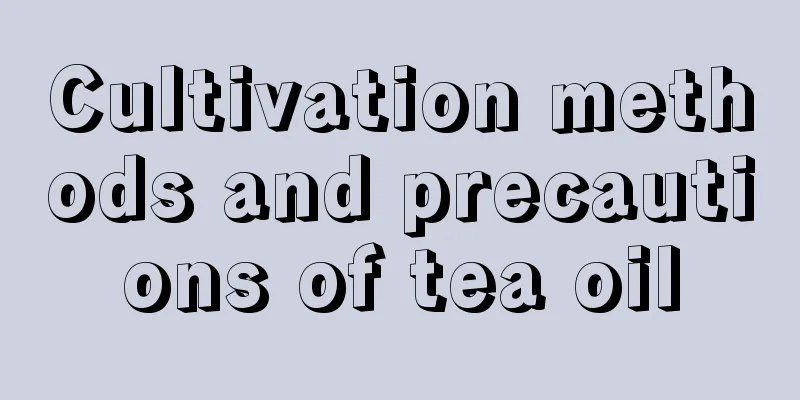Cultivation methods and precautions of tea oil

1. Maintenance methods1. Soil: Camellia oleifera is an easy-to-grow plant and does not require high soil quality. Generally, you can prepare thicker acidic soil. Loose and fertile soil will be more conducive to its growth. 2. Water: It has a higher demand for water, especially during its vigorous growth period. Adequate water supply can promote its better growth. However, the amount of water should not be too sufficient, as too much water will affect its growth. 3. Nutrients: During its growth period, nitrogen fertilizer is often used when fertilizing. Nitrogen fertilizer can provide more nutrients to plants, making them grow stronger and stronger. 4. Light: Adequate light is essential during maintenance, and full-sun exposure is suitable. If insufficient light is absorbed, the branches and leaves will grow more, but the fruits produced will be very few, and the oil yield will be greatly reduced. 2. Breeding techniques1. Pruning: In order to ensure the germination rate during planting, the seedlings will be planted close together. When they grow to about 20 cm, they need to be simplified, leaving only one out of three. The withered branches and leaves should also be pruned appropriately to promote their absorption of nutrients. 2. Reproduction: Cuttings are often used, and the best time is summer. Select strong and full branches, cut them into cuttings about four centimeters long, and dip them in some ABT rooting powder. When cuttings, keep the cuttings upright and the row spacing at about ten centimeters. Finally, water them and provide shade. The cuttings will take root and sprout in about 60 days after cuttings. 3. Problem diagnosis and treatment1. Root rot: The most common disease in oil-tea cultivation is root rot. If not prevented and controlled in time, the roots will completely rot and even die. Use diluted copper sulfate to spray the roots and soil for disinfection. 2. Weevil: Weevil is very harmful to the growth of tea oil. You can dilute the insect crystal with water and spray it to kill it. IV. Other issues1. How to survive the winter: It likes to grow in a mild environment and is afraid of cold temperatures. During the cultivation period, it is best to control the temperature at around 16 to 18 degrees Celsius. Too low temperature or frost will cause the flowers and fruits of the plant to wither. 2. Is it edible: Its seeds can be pressed into oil. The pressed oil is clear in color and fragrant in taste, and can be used as cooking oil. |
<<: Chickpea cultivation methods and precautions
>>: Cultivation methods and precautions of rapeseed
Recommend
Why are orchids so expensive?
1. Scarcity makes things valuable Orchids must be...
How to deal with the lucky charm after it blooms? How to prune it after the flowering period
Treatment after flowering of Lucky Flower 1. Prun...
Black goat breeding method
Black goats have strong adaptability, are easy to...
What fertilizer is best for roses?
Fertilizing roses Roses like fertilizer and need ...
How to prune large-leaf gardenia
1. Purpose of pruning (1) Because this plant has ...
Pumpkin seedling planting technology and management
Pumpkin is sweet and delicious. It is one of the ...
High-yield cultivation techniques of broccoli
Broccoli is also known as loose-flower broccoli a...
How to sow chive seeds
Leek seed sowing time Chives can be sown from spr...
How to save the money tree when its leaves turn yellow and fall off
1. Replace the flower soil Reason: If the soil us...
Diseases and Pests of Rat's Tail Palm and Their Control
Diseases and their control of rat tail palm Commo...
How to trim the gardenia to look good
When is the right time to prune the gardenia? The...
How to improve the fruit set rate of rice?
Rice fruit setting rate is one of the important i...
How many years does it take for black pearl cherries to bear fruit?
Introduction to planting black pearl cherry fruit...
Pepper cultivation methods and precautions
Pepper is a common vegetable , rich in vitamins a...
Osmanthus grafting method
The main purpose of grafting osmanthus is to solv...









